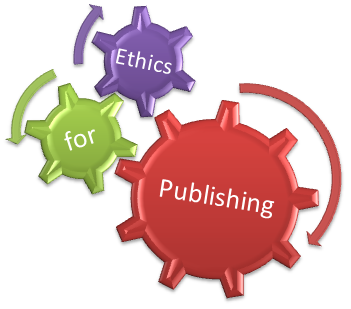Numerical Investigation on Combustion Behaviors of Direct-Injection Spark Ignition Engine Fueled with CNG-Hydrogen Blends
(*) Corresponding author
DOI's assignment:
the author of the article can submit here a request for assignment of a DOI number to this resource!
Cost of the service: euros 10,00 (for a DOI)
Abstract
This paper deals with the subject of natural gas-Hydrogen blends as alternative fuel for spark ignition engine. First, a brief overview on previous works in this field was presented. Then, a numerical investigation focusedon the effect of hydrogen addition on the performances and emissions was also presented. A CFD approach using CONVERGE CFD Code was applied on a direct injection spark ignition engine at low regime and lean mixtures. A detailed chemistry associated with AMR (Adaptive Mesh Refinement) technique was adopted. To illustrate the effect of hydrogen addition to natural gas, three hydrogen fractions are considered 0%, 10% and 18%. The obtained results showthatthe promotion of the chemical reaction with hydrogen addition is mainly due to the increase of free radicals H, O, OH in the flame as a result of hydrogen addition. Hence, the heat release rate starting is advanced with the increase of hydrogen fraction while the combustion duration decreases. It is observed that the heat release rate and the maximum in cylinder temperature increase when hydrogen is added. Exhaust CO emissions decreases with the increase of hydrogen fraction, while NOx emissions increase. Hydrogen addition could give a great potential to reduce soot formation.
Copyright © 2013 Praise Worthy Prize - All rights reserved.
Keywords
References
Pacala S, Socolow R. Stabilization wedges: solving the climate problem for the next 50 years with current technologies. Sci, vol. 305, pp. 968-972,2004.
Holladay J D, Hu J, King D L, Y Wang. An Overview of Hydrogen Production Technologies. Catal.Today, vol. 139, n.4, pp. 244-260, 2009
Ball M, Wietschel M. The future of hydrogen – opportunities and challenges,International journal of Hydrogen Energy;vol. 34, n.2, pp. 615-627,2009.
Sperling, Daniel, Mark A, DeLuchi, Michael Q. Wang. Toward Alternative Transportation Fuels and Incentive-Based Regulation of Vehicle Fuels and Emissions. Institute of Transportation Studies, University of California, Davis, Research Report UCD-ITS-RP:91-111, 1991.
King R O, Rand M. The hydrogen engine.Canad J of Techn, vol. 33, pp. 445-469, 1955.
Ghazi A Karim. Hydrogen as a spark ignition engine .fuel, International journal of Hydrogen Energy, vol. 28, n. 5, pp. 569-577, 2003.
Yossefi D, Maskell S J, Ashcroft S J, Belmont M R. Ignition Source Characteristics for Natural-Gas-Burning Vehicle Engines. Journal of Automobile Engineering (Proc. Inst. Mech. Engrs. Part D); vol. 214, pp. 171-180, 2000.
Cripp H, Energy and the environment. _http://eco.gn.apc.org/pubs/energy_and_environment.html.
HakanOzcan. Hydrogen enrichment effects on the second law analysis of a lean burn natural gas engine. International journal of Hydrogen Energy, vol. 35, n. 3, p. 1443-1452, 2010.
Robert K, Dixon. Advancing Towards a Hydrogen Energy Economy: Status, Opportunities and Barriers.Mitig Adapt Strat Global Change, vol. 12, n.3, pp. 325-341,2007.
Aslan E, Ergeneman M, Sorusbay C. Use of hydrogen in internal combustion engine as fuel. Istanbul Technical University: Istanbul; 1991.
Anthony A Amsden, Norman L Johnson. Three dimensional computer modelling of hydrogen injection and combustion.Los Alamos National Laboratory.95 SMC Simulation Multiconferencen 1995.
JinhuaWanga, Zuohua Huang, Yu Fang, Bing Liu, KeZeng, Haiyan Miao et al. Combustion behaviors of a direct-injection engine operating on various fractions of natural gas–hydrogen blends. International journal of Hydrogen Energy, vol. 32,n. 15, pp. 3555-3564, 2007.
Zuohua Huang, Jinhua Wang, Bing Liu, KeZeng, Jinrong Yu, Deming Jiang. Combustion characteristics of direct -injection engine fueled with natural gas hydrogen blends under different ignition timings. Fuel, vol. 86, n.3, pp. 381-387,2007.
OrhanAkansu S , NafizKahraman, Bilge Çeper. Experimental study on a spark ignition engine fuelled by methane–hydrogen mixtures.International journal of Hydrogen Energy, vol. 32, n. 17, pp. 4279–4284, 2007.
HailinLi , Ghazi A. Karim. Exhaust emissions from an SI engine operating on gaseous fuel mixtures containing hydrogen. International journal of Hydrogen Energy, vol. 30, n. 13, pp. 1491 –1499, 2005.
NafizKahraman, Bilge Çeper, OrhanAkansu S, KadirAydin. Investigation of combustion characteristics and emissions in a spark-ignition engine fuelled with natural gas–hydrogen blends. International journal of Hydrogen Energy, vol. 34, n. 2, pp.1026-1034, 2009.
Saravanan N, Nagarajan G. An experimental investigation of hydrogen-enriched air induction in a diesel engine system.International journal of Hydrogen Energy, vol. 33, n. 6, pp. 1769-1775, 2008
Bing Liu, Zuohua Huang, KeZeng, Hao Chen, Xibin Wang, Haiyan Miao, et al. Experimental Study on Emissions of Spark-Ignition engine fueled with Natural Gas-Hydrogen Blends. Energy Fuels, vol.22, n. 1, pp. 273-277, 2008.
Bauer CG, Forest T W. E effect of hydrogen addition on performance of methane-fueled vehicles. Part I: effect on S.I. engine performance. International journal of Hydrogen Energy, vol. 26, n. 1, pp. 55-70, 2001.
Bauer CG, Forest T W. E effect of hydrogen addition on performance of methane-fueled vehicles. Part II: driving cycle simulation. International journal of Hydrogen Energy, vol. 26, n. 1, pp. 71-90, 2001.
JianXua, Xin Zhang, JianhuaLiua, LongfeiFana. Experimental study of a single-cylinder engine fueled with natural gas–hydrogen mixtures. International journal of HydrogenEnergy, vol. 35, n. 7, pp. 2909-2914, 2010.
Van Blarigan P, Keller J O. A hydrogen fuelled internal combustion engine designed for single speed/power operation. International journal of Hydrogen Energy, vol. 23, n.7, pp. 603-609, 1998.
Fanhua Ma, Yu Wang. Study on the extension of lean operation limit through hydrogen enrichment in a natural gas spark-ignition engine. International journal of Hydrogen Energy.Vol. 33, n. 4, pp1416-1424, 2008.
Hailin Li, Ghazi AKarim. Exhaust emissions from an SI engine operating on gaseous fuel mixtures containing hydrogen. International journal of Hydrogen Energy, vol. 30, n.13, pp.1491-1499, 2005
DimopoulosP ,Rechsteiner C, Soltic P, Laemmle C,. Boulouchos. Increase of passenger car engine efficiency with low engine-out emissions using hydrogen–natural gas mixtures: A thermodynamic analysis. International journal of Hydrogen Energy, vol, 32, n. 14, pp. 3073-3083, 2007.
James W Heffel. NOx emission reduction in a hydrogen fueled internal combustion engine at 3000 rpm using exhaust gas recirculation. International journal of Hydrogen Energy, vol. 28, n. 11, pp. 1285-1292, 2003.
S. O.BadeShrestha, G.A. Karim. Hydrogen as an additive to methane for spark ignition engine applications.International journal of Hydrogen Energy, vol. 24, n.6, pp. 577-586, 1999.
Marie Bysveen, Engine characteristics of emissions and performance using mixtures of natural gas and hydrogen. Energy, vol. 32, n. 4, pp. 482-489, 2007.
Martin Weinrotter, Herbert Kopecek, Martin Tesch, Ernst Wintner, Maximilian Lackner, Franz Winter. Laser ignition of ultra-lean methane/hydrogen/air mixtures at high temperature and pressure.ExpTherm Fluid Sci, vol. 29, n. 5, pp. 569-577, 2005.
Das L M, RohitGulati, Gupta P K. A comparative evaluation of the performance characteristics of a spark ignition engine using hydrogen and compressed natural gas as alternative fuels.International journal of Hydrogen Energy, vol. 25, n. 8, pp. 783-793, 2000.
Nagalingam B, Duebel F, Schmillen K. Performance Study Using Natural Gas -Hydrogen -Supplemented Natural Gas and Hydrogen in AVL research engine. International journal of Hydrogen Energy, vol. 8, n. 9, pp. 715-720, 1983.
Turns Stephen R. An introduction to combustion: concepts and applications. 2nd ed. Boston: McGraw-Hill;.p. 158, 2000.
Bin Huang, Erjiang Hu, Zuohua Huang, JianjunZheng, Bing Liu, Deming Jiang. Cycle-by-cycle variations in a spark ignition engine fueled with natural gas–hydrogen blends combined with EGR. International journal of Hydrogen Energy, vol. 34, n. 19, pp. 8405–8414, 2009.
Fanhua Ma, Yu Wang, Haiquan Liu, Yong Li, Junjun Wang, Shangfen Ding. Effect of Hydrogen addition on cycle-by-cycle variations in lean burn natural gas spark-ignition engine.International journal of Hydrogen Energy, vol. 33, n. 2, pp. 823-831, 2008
Richards, K. J., Senecal, P. K., and Pomraning, E., CONVERGE™ (Version 1.3), CONVERGENT Science, Inc., Middleton, WI.2008.
Smith Gregory P, Golden David M, Michael Frenklach, Moriarty Nigel W, Boris Eiteneer, Mikhail Goldenberg, et al. Available from: http://www.me.berkeley.edu/gri_mech/.
Jinhua Wang, Zuohua Huang, Chenglong Tang, HaiyanMiao ,Xibin Wang. Numerical study of the effect of hydrogen addition on methane–air mixtures combustion.International journal of Hydrogen Energy, vol. 34, n. 2, pp. 1084-1096, 2009.
Khalid I. Hamada, M.M. Rahman, A. Rashid A. Aziz. Development of a Computational Fluid Dynamics Model for Direct Injection Hydrogen Fueled Engine (2012), International Review of Mechanical Engineering (IREME), 6 (3), pp. 675-679.
Tarek M. Belal, El Sayed M. Marzouk, Mohsen M. Osman, Numerical Investigation on the Effect of Different Carbon Dioxide and Hydrogen Concentrations on Closed Cycle Diesel Engine Performance and Pollutant, (2010) International Review of Mechanical Engineering (IREME), 4 (6), pp. 733-747.
Refbacks
- There are currently no refbacks.
Please send any question about this web site to info@praiseworthyprize.com
Copyright © 2005-2024 Praise Worthy Prize








